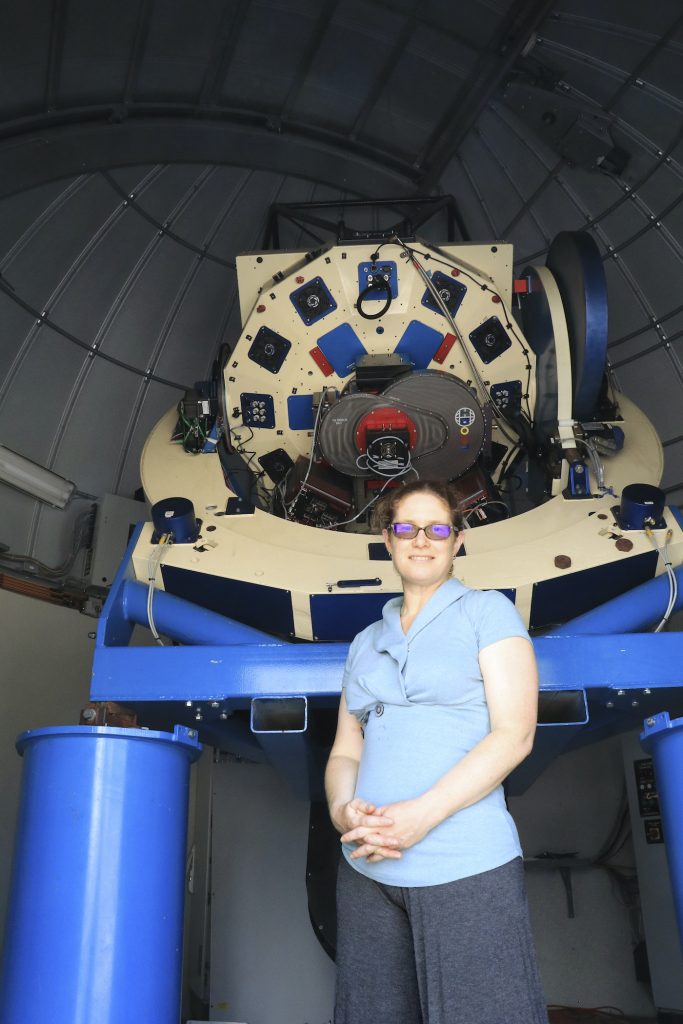Grant for Equity & Excellency in Science Applications Open September 2021

Attention all stargazing scientists and students, sharpen your galactic pencils to apply for the first equity grant in astrophysics to work with the Rubin Observatory’s LSST (Legacy Survey of Space and Time) Project newly constructed 8.4-meter Simonyi Survey 3-mirror telescope and 3-billion-pixel solid state detector digital camera. The camera records time-evolution 6-color images for both still and motion pictures of our galaxy, producing approximately 20 terabytes of data daily to be processed and stored.
Proposal guidelines to apply for the one year $20,000 individual and $30,000 team grants are online now, where you can sign up for grant webinars September 8 and 9, with applications due in late September.
This equity grant is due to the intrepid efforts of Rachel Street, a PhD in Astrophysics at the Las Cumbres Observatory (LCO) in Goleta, home of the first global network of robotic telescopes operating around the clock. Through her LCO research on microlensing, she is collaborating with the Rubin LSST project. She suggested a Kickstarter one-year grant program that is inclusive, removing all barriers to eligible scientists worldwide, focusing on the hot areas of research: Transients and Variable Stars Science, Solar System Science, Science within our Milky Way, and the local environment around our galaxy. The Heising-Simons Foundation is funding the grant.
Here is our interview with Street with the latest details to apply and more:
Q: How is the grant application and equity focus set up?
A: I am the Program Officer for the grant. Proposal guidelines for grant applicants are on the website and the entire science community is invited to propose a project that meets those guidelines.
I am putting together a Resource Allocation Committee of eight to 10 scientists with expertise in Rubin science collabs and experience advocating for equity in science and science collaborations to make sure that everyone can maximize their contributions and that the resources are allocated fairly and impactfully. They will select the grantees. Our goal with this program is to level the playing field.
We are reaching out to the American Astronomical Association, the National Society of Black Physicists, and organizations in Africa, Europe, and other countries.
The grant includes four elements, of which the Kickstarter grants program is the largest. The other elements provide funding to cover the costs of publishing work by science collaboration members, providing access to computing facilities and training, and to online meeting services which will enable us to host workshops aimed at fostering collaborations between scientists.
Who is eligible for the grant?
Our grants program is unusual in that we encourage proposals by early career researchers, be they students or post-docs as well as staff members. We are not setting specific distribution areas or criteria because barriers to participation can take many forms.
Instead, when people apply, they will have the opportunity to describe the science they wish to accomplish, and how the funding will make a difference to their team and wider community. Our review team will consider both the scientific excellence and the wider impacts of the proposed projects in selecting recipients for the funds.
What are the September 8 and 9 workshops about?
Our hope is that members of the three participating science collaborations and potential collaborators will use it to brainstorm ideas for projects centered around the preparatory science in each field. This will give everyone an idea of what work is planned and how to get involved, which I hope will help to build connections for researchers who may be new to the project.
Who has access to the Rubin data? All scientists in the US and Chile have automatic Rubin data rights access through the Rubin Science Platform. Rubin Science Collabs are the best way to get involved in the research. Rubin’s Education and Public Outreach [EPO] team is building a portal for citizen scientists and the general public to explore data and make their own discoveries. And there is a demo app.
411
https://lsst-sci-prep.github.io/kickstarter_grants.html







